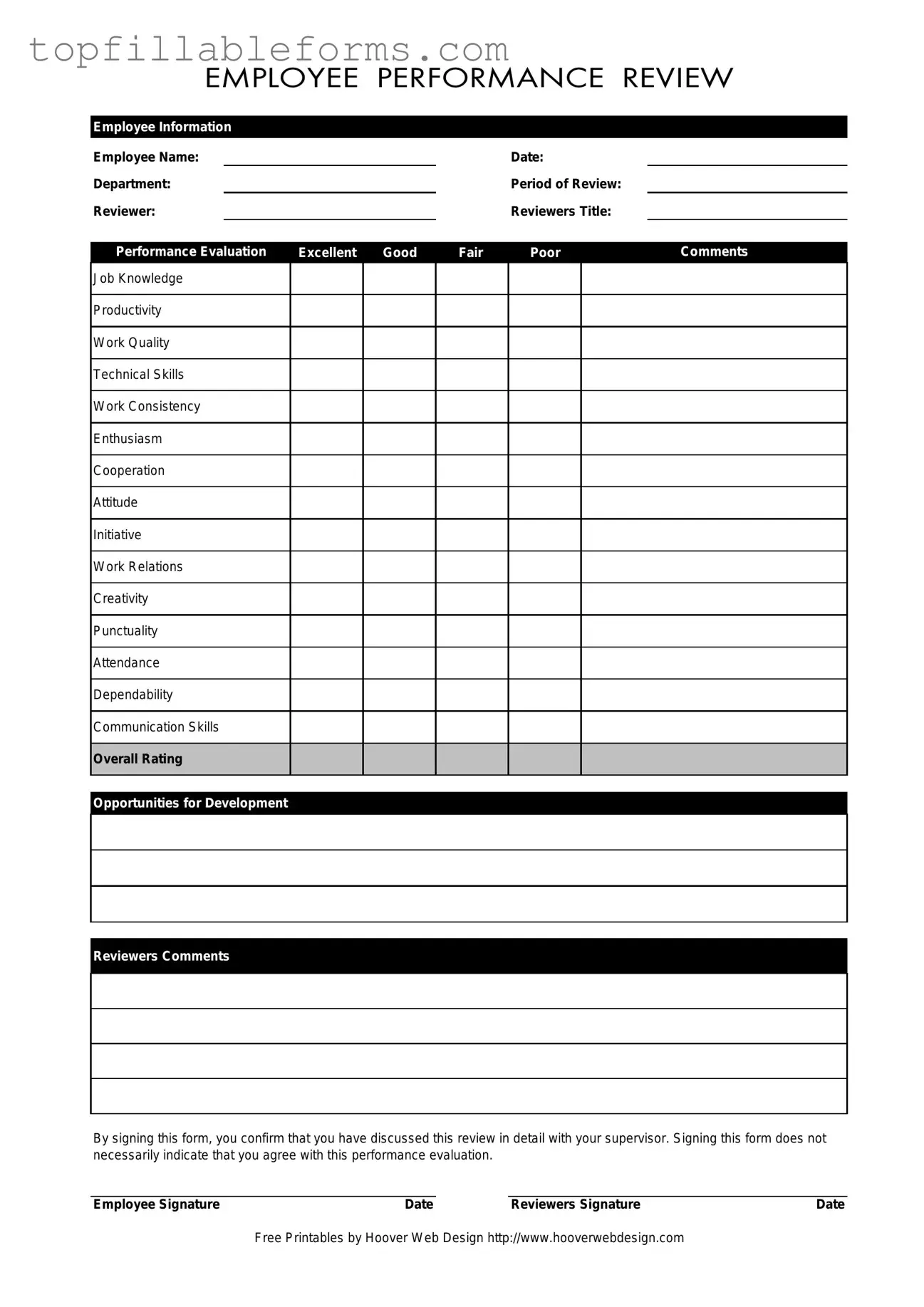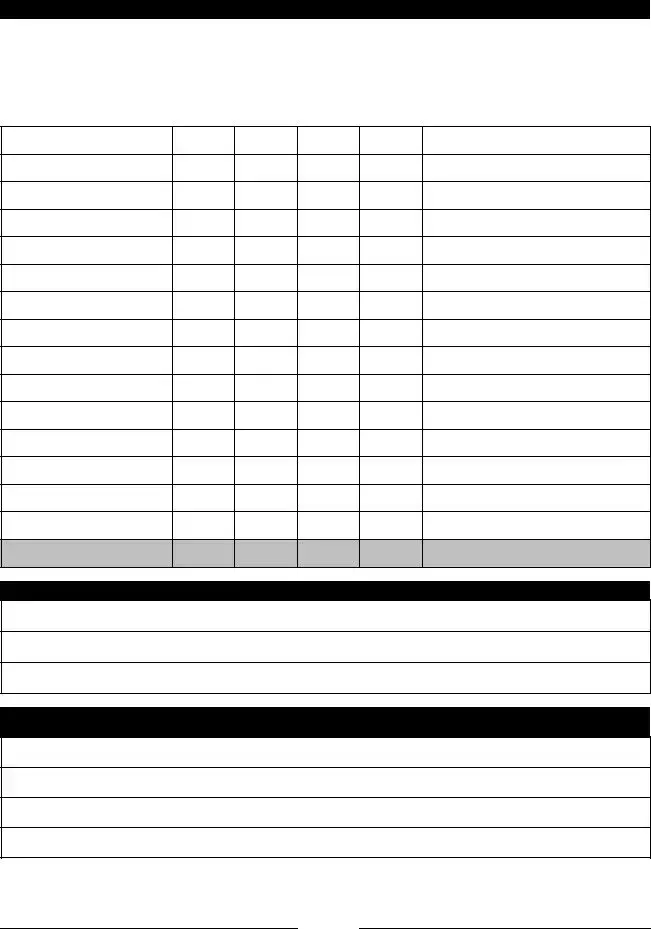Printable Employee Form in PDF
The Employee form is a document used to evaluate an employee's performance over a specific period. It includes sections for employee information, performance ratings, and comments from both the reviewer and the employee. This form serves as a tool for constructive feedback and professional development.
Open Employee Editor Here

